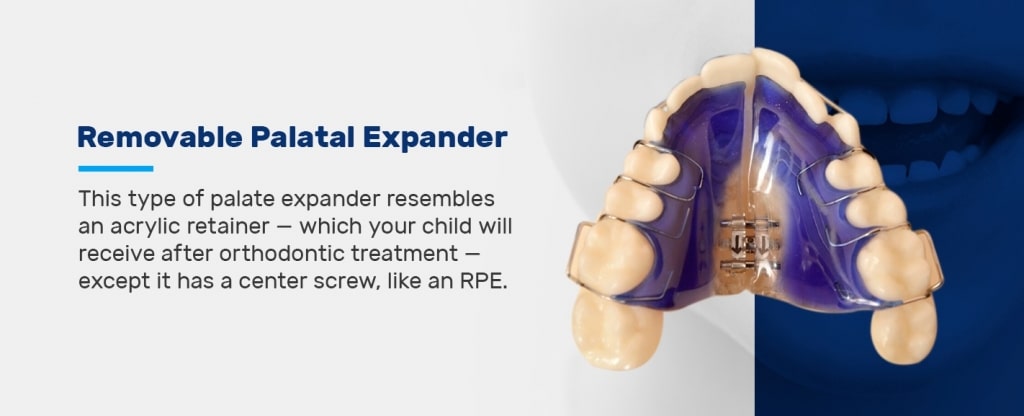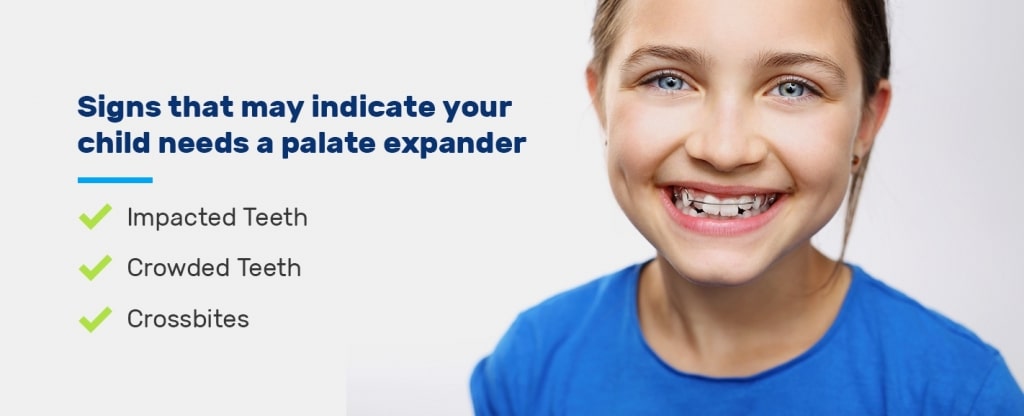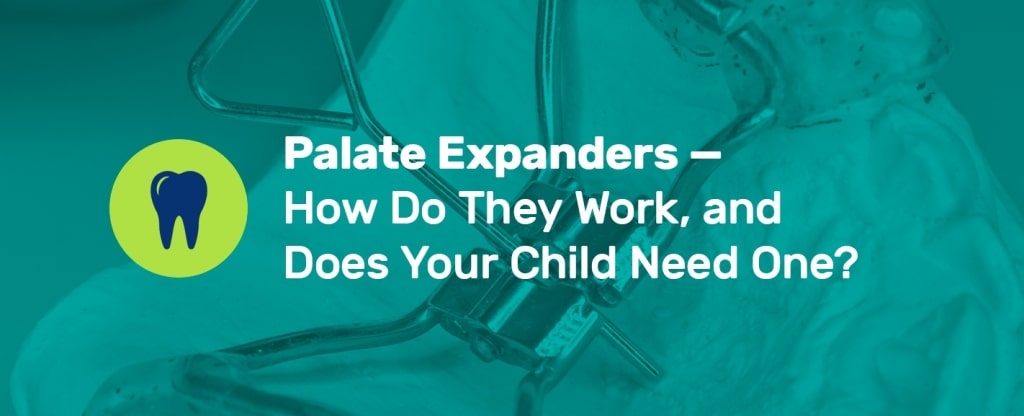As your child gets older, you’re probably beginning to wonder about the world of orthodontia. Braces and Invisalign are reliable, standard methods of straightening your child’s teeth and correctly aligning their jaw, but sometimes orthodontists require added support — a palate expander — to transform your child’s smile.
Expanders before braces are typical among children and younger adolescents. If you’ve had orthodontic treatments in the past, you might have even had one yourself. In this post, we’ll outline everything you need to know about palate expanders and how to know when to schedule an orthodontic appointment for your child.
What’s an Expander?
A palate expander is an orthodontic tool used to widen the palate — the roof of the mouth, also referred to as the maxilla — over time. Some children need them, and some don’t. It depends on your child’s mouth and the orthodontist’s treatment plan.
Everyone is unique, including their palate shape. Naturally narrow palates can cause improper tooth growth and jaw alignment, making it harder for orthodontists to transform a child’s smile. A dental expander makes room for teeth to grow and corrects specific jaw alignment problems.
Palatal expanders work by applying gentle pressure to the palate until it reaches the desired expansion. Treatment can last anywhere from three to twelve months, depending on the usage, child’s palate and the orthodontist’s opinion. Most orthodontists will keep the palate expander in place after achieving the desired expansion so the palate solidifies its new shape, then orthodontic treatment will continue as needed.
Types of Palate Expanders for Kids
Expanders for teeth vary depending on your child’s age and unique palate shape. They come in two main forms — fixed and removable. Palate expanders rest along the top of the mouth, suited to the natural shape of the dental arch and palate size. Because palate expanders complement a child’s natural palate, they’re custom-made and fitted for each patient.
Three common types of dental palate expanders include the following.
Rapid Palatal Expander
A standard palate expander is the rapid palatal expander (RPE). An RPE has a center screw with four branches that attach to parallel back teeth of the upper jaw. The orthodontist will supply you with a small key that activates the center screw.
Every day, patients will use that key to turn the screw and activate the RPE, widening it and creating tension on the two palatal bones. Over three to six months, the RPE will expand the palate to the desired shape.

Removable Palatal Expander
Another prevalent type of palate expander is removable. Your child’s orthodontist may suggest this approach if your child’s palate only requires minimal expansion. This type of palate expander resembles an acrylic retainer — which your child will receive after orthodontic treatment — except it has a center screw, like an RPE.
The center screw works similarly, requiring gentle daily expansion for up to six months. Some orthodontists allow their patients to customize their removable palatal expander with their favorite color, making orthodontic treatment more fun!
Mini-Implant Assisted Rapid Palatal Expander
If you start orthodontic treatment early enough, your child likely won’t need a mini-implant assisted rapid palatal expander (MARPE). MARPEs are typically for older patients, like young adults, who require more powerful pressure to reshape their palate.
A MARPE is a minimally invasive treatment that includes two to four mini-implants placed on parallel points of the palatal bones, joined by a center screw. The center screw works similarly to other palatal expanders, but it applies pressure directly to the palatal bones instead of the teeth.

Does Your Child Need a Palate Expander?
As mentioned, not every child needs a palate expander. If you think your child might need one — or other orthodontic treatments — schedule an appointment with our orthodontist, and they’ll determine whether it is necessary during the treatment process.
Let’s look at some signs that may indicate your child needs a palate expander.
1. Impacted Teeth
A narrow palate limits the available space needed for adult teeth to grow in. This issue can cause many problems, like an impacted tooth. In children, an impacted tooth occurs when the adult tooth gets trapped inside the gum and has nowhere to go or grows in the wrong direction.
An impacted tooth can be quite painful and leads to an increased risk of disease and jaw misalignment. The use of a palatal expander substantially reduces this risk, widening the palate and allowing space for the impacted tooth to grow properly.
2. Crowded Teeth
Limited palatal space also increases the risk of crowded teeth. With a narrow palate, teeth have to squeeze their way into placement, often resulting in problems like bunching, overlapping, twisting or angling forward or backward.
Crowded teeth can worsen over time without proper treatment. Also, it makes it harder to maintain oral health, like brushing and flossing, which causes plaque buildup and an increased chance of disease and tooth decay.
A palatal expander widens the palate to give adult teeth more breathing room to grow. A roomier mouth makes it easier for your child to maintain their oral health, and for an orthodontist to straighten your child’s smile using braces or Invisalign.
3. Crossbites
The upper and lower jaw should be complementary and fit together like a puzzle piece. A narrow palate can misshape the upper jaw, leading to a bite problem called a crossbite. Orthodontists identify crossbites when the upper back teeth bite inside the bottom back teeth.
Crossbites may lead to problems like gum disease and tooth chipping, which palate expanders and braces can help avoid.
At What Age Should a Child Get a Palate Expander?
The ideal age for a child to get a palate expander is when they’re young, around 7 to 8 years old. The palate is forming rapidly, so it’s easier for orthodontists to reshape.
The palate structure solidifies as children get older, usually around puberty, making it harder for it to widen. Because of this, most orthodontists recommend palate expander treatment before children finish their growth spurt, around 12 to 13 years old.
Schedule an Orthodontic Consultation at Sprout Pediatric Dentistry & Orthodontics
Orthodontic care is essential for people of all ages, especially for children. Young people’s mouths are changing rapidly. They’re losing baby teeth and growing adult teeth, which causes a bunch of shifting and moving that, without the right treatment, may lead to problems in the future.
An experienced orthodontist — like the board-certified pediatric and orthodontic team at Sprout Pediatric Dentistry & Orthodontics — can encourage correct tooth and jaw alignment using the right orthodontic tools, such as a palate expander.
We want to help transform your child’s smile. Schedule a consultation appointment with Sprout Pediatric Dentistry & Orthodontics, and we’ll work with you to create a customized dental plan for your child. Visit our website and fill out our patient form, or give us a call at 503-477-9911.

A Portland native, Dr. Paul went to dental school at OHSU and finished his Orthodontic Residency in Philadelphia, PA. Dr. Paul works with children and teenagers at his orthodontic practice.




